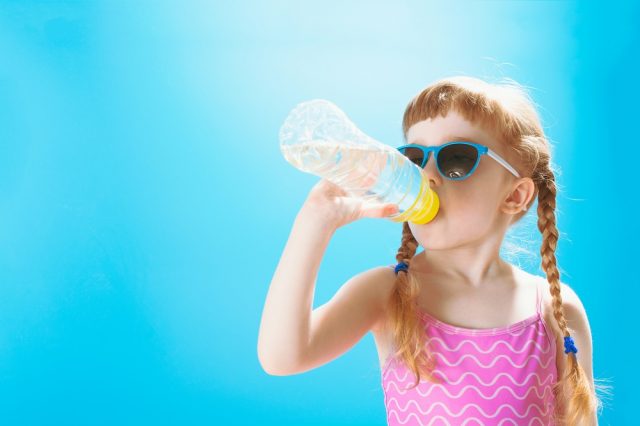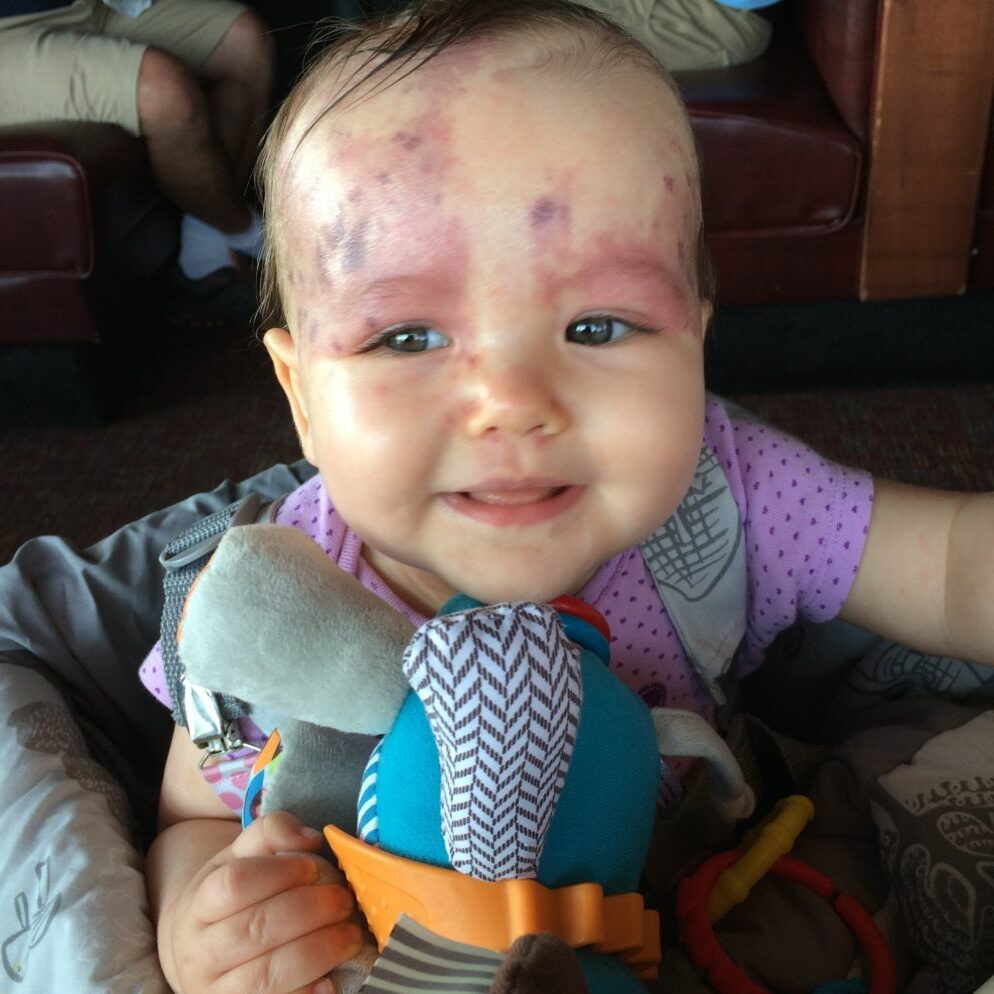
At camps, playgrounds, beaches and pools, on sports fields or in backyards, summer’s high humidity and ambient air temperatures make many settings ripe for dehydration risks. Anyone who is out in the heat for prolonged time is susceptible to dehydration, especially children.
We spoke to four sports physical therapists from Johns Hopkins Medicine — John Dale, Pat Griffin, John Shipley and Christie Pona — who collaborated here to share some important points on maintaining healthy hydration. Both Dale and Pona also are credentialed athletic trainers.
Children dehydrate faster
When more water from the body is lost than consumed, that’s dehydration. A water loss of just 2 percent body weight can hinder athletic performance, affect thermoregulatory function and increase danger of heat illness. Children have a greater surface-area-to-body-mass ratio (meaning they get hotter and are less efficient at sweating than adults). Plus,
kids are often just so busy having fun and playing that
they forget to hydrate.
Early warning signs of dehydration and minor heat illness are thirst, dizziness, lightheadedness and muscle cramps, tightening and spasms. Be aware that the risk for dehydration and heat illness is higher the day after an extended amount of time spent out in the heat.
Drink before you’re thirsty
By the time your body tells you you’re thirsty, you’re already dehydrated. Stay ahead of dehydration by consuming 6 to 10 ounces of fluid every 15 minutes during exercise. If your child will be participating in hard-charging exercise in the heat, you can even monitor hydration needs by weighing the child before and after activity to track the amount
of fluid lost. Recover and replenish by consuming 16 ounces of fluid for each pound
of body weight lost.
Develop a regimen
Parents and children can learn to monitor hydration and establish good habits. It is recommended that children ages 9 to 13 consume about 2 to 3 liters of water per day, with less than 1 liter coming from food sources. Making healthy water consumption a daily habit will help kids when they participate in sports and activities where they may be sweating (90 percent of water loss is due to sweating).
The physical demands of exercise warrant a proper hydration regimen. It is suggested that two to three hours prior to activity, kids should drink 17 to 20 ounces of water. Then, 15 to 20 minutes prior, kids should consume another 7 to 10 ounces. During activity, regular and frequent hydration breaks are recommended, starting early in the activity session, with 7 to 10 ounces consumed every 10 to 20 minutes. Following exercise, it is important to continue replenishing the body with fluids.
Keep the fluids flowing
Establishing successful hydration habits at home relies, in part, on having beverages readily available at all times — based on the child’s preference. In general, water is the best way to go, but it’s also acceptable to have milk, juice or sometimes sports drinks. Keep them chilled — cold drinks have a much higher consumption rate than warm ones. Try to avoid caffeine.
Kids should drink to match the amount of fluid lost during exercise, and optimal hydration often depends on the individual’s activity and sweat rate. Eating fresh fruits and veggies, such as oranges, grapes, watermelon, peaches, cherry tomatoes and cucumbers can be an added source of energy and hydration.
About those sports drinks …
Water before and after is the best way to hydrate for most forms of moderate exercise. Sports drinks are hugely popular, but they can also contain a lot of sugar and are generally not necessary for shorter activities or everyday use. Kids don’t need sports drinks if they’re not exercising.
However, when exercising in hot, humid conditions for sessions of high intensity that last more than an hour, or if kids begin to have exercise-associated muscle cramps, sports drinks with a carbohydrate concentration of 6 to 8 percent of total volume and a small amount of sodium may be preferred over water, as they stimulate the drive to drink, replace electrolytes lost in sweat, replenish glycogen storage and maintain immune and cognitive function.
It’s serious, but preventable
Heat illness is progressive if left untreated and should be monitored closely. It’s the third-leading cause of death in high school athletes with 20 reported athletic heat-stroke fatalities from 2010 to 2015. Currently, only 13 states have heat acclimatization policies for secondary school athletics. Dehydration and heat illness can be 100 percent preventable through parent, coach and athlete education, a period of acclimatization, and proper hydration before, during and after activity.
Clothing and sports equipment can also play a role in helping to prevent heat illness. It is suggested to wear light-colored and lightweight clothing and to remove unnecessary equipment (such as helmets and padding) when temperatures are high. To gradually acclimate children to extreme heat, coaches should consider holding shorter practices with lighter equipment during the first week or so and follow work-to-rest ratios (for example, 10-minute breaks for every 40 minutes of practice).
Heat exhaustion and heat stroke
If any signs of muscle cramping are present, do not ignore them. Children should modify activity, stretch and consume fluids. If cramping begins to progress and show signs of other heat illness, activity must be stopped immediately.
Heat exhaustion presents with symptoms including: headaches, dizziness, confusion and disorientation, excessive sweating, flushed skin, nausea and/or vomiting, fatigue,
chills and/or goosebumps. Activity should be halted, and the child should be placed in the shade, lying down, while replenishing fluids.
Untreated heat exhaustion may progress to exertional heat stroke, which is extremely dangerous. Symptoms include complete lack of sweat, dry/hot skin, muscle incoordination, mental confusion, aggression, seizures, rapid breathing and loss of consciousness. It can take as few as 30 minutes for cell damage to occur with a core body temperature above 105 degrees. Call for immediate emergency assistance and begin cooling the child with ice, cold towels and fanning, especially to the armpits and groin, as well as immersing or dousing in water. If someone is suffering from heat stroke, remember to begin cooling procedures first and transport second.
Hydration habits
Set a good example for kids by paying attention to your own water intake habits. Try tracking your family’s water consumption on an average day to see how you compare with the suggested guidelines. Remind each other often to drink up. There are even various apps to coach you to drink water throughout the day. Buy fun reusable water bottles for each family member to keep handy during work and play (remember, we sweat when swimming, too). Respect the importance of healthy hydration. Plan ahead and stay in front of heat illness, so you can enjoy making the most of the hazy, crazy, not-so-lazy days of summer.









